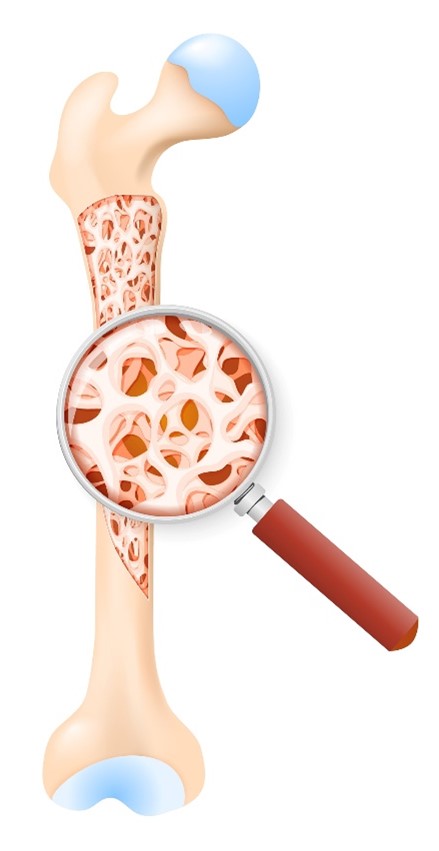Author
Reviewer
Share Article
Osteoporosis - More than just a BMD score
| Author | Reviewer |
|
Marla Shapiro C.M., MDCM, CCFP, MHSc, FRCPC, FCFP, NCMP Professor, DFCM, University of Toronto Toronto, ON |
Christine Palmay, MD, CCFP, FCFP Midtown Health and Wellness Clinic Toronto, ON |
Osteoporosis is a disorder of the bone. In it there is bone loss that ultimately damages the skeletal architecture leading to weakness of the bones which predisposes patients to fracture. Many are surprised to know that this is not a curable disease, but a chronic disease and as such will require prolonged management. As a result, it is critical for us to identify those at risk and develop long term treatment strategies.
The objectives of management are to reduce the risk of fracture by promoting bone health. In addition, osteoporosis medications are used to increase both bone strength and Bone Mineral Density (BMD). Most importantly, we must engage patients in understanding their role in chronic disease management.
Watch this video summary with blog author Dr. Marla Shapiro

How do we identify patients at high and very high risk of fracture? Why is that important?
As always, we start with a complete history. It is ESSENTIAL to proactively ask about prior fractures, as patients are often unaware of the significance of their fracture and often dismiss the event as a natural consequence of a fall. I remind patients that in general, healthy bones don’t break whereas brittle bones do.
Fracture risk can be assessed by several tools. I often use FRAX. (International Osteoporosis Foundation https://www.osteoporosis.foundation/health-professionals/diagnosis). While no tool is perfect, we can identify patients at high risk and very high risk of fractures. I also recommend sharing this process with patients so that they understand that we are not only treating a BMD score in isolation, but we are treating their risk of fracture and subsequent preventable outcomes: morbidity such as pain, a loss of independence and potential mortality.
Once we have identified an at-risk patient, we want to maintain skeletal mass and prevent age-related bone loss. It is critical to prevent falls which are a significant risk factor for fracture.
By using FRAX we can identify high-risk and very high risk patients. By plugging in our patient specific information, we will get two scores. One is the MOF risk which is the risk for major osteoporotic fracture inclusive of sites such as hip, spine, wrist, or humerus. A score of 20 % or greater puts the patient at high risk of fracture. A score greater than 30% puts them at very high risk and will often include patients who have had a fracture in the last year or has a history of multiple fractures. The second score this tool provides is the risk of hip fracture. A score of 3% or greater at the hip site means the patient is considered high risk and a risk of hip fracture score of greater than 4.5% means this is a very high-risk patient for future fracture.
![]() What are the implications of osteoporosis and fractures?
What are the implications of osteoporosis and fractures?
So, what about treatment?
We have multiple guidelines that can help to differentiate therapies. Societies such as the SOGC, NAMS, AACE and the Endocrine Society all agree that bisphosphonates and denosumab can be used as a first line for these high-risk patients. The SOGC as well endorses the use of teriperatide or romosozumab. Some of these international organizations acknowledge looking at head-to-head studies and would prefer denosumab over bisphosphonate for a high-risk population.
![]() What about atypical fractures?
What about atypical fractures?
Once we review treatment for the very high-risk patients, the 4 therapies are endorsed by SOGC and AACE but the NAMS and the Endocrine Society offer teriparatide and romosozumab preferentially.
Choosing a therapy will involve a discussion with our patients regarding preferences as well as ensuring there are no contraindications to a particular therapy. For example, there is data on romosozumab that may be potentially associated with a slightly increased risk of major cardiovascular events compared to alendronate. Therefore, in a high-risk cardiac population this might not be the right medication choice. In summary, there is no “one drug fits all” and as in any other therapy, choices need to be based on a patient’s risk factors, contraindications, and preferences.
 How long should treatment last?
How long should treatment last?
Again, different guidelines exist for advising us in this area.
In general terms bisphosphonates have an ideal widow of 5 years and at that time we would re-evaluate our patient’s risk of fracture. If the fracture risk is not high, meaning there is no prior fracture, and the femoral neck score is better that -2.5 we can consider a drug holiday but keep a close eye on them at a minimum of a 2-year interval to assess if they require transitioning to a new therapy or can continue to be monitored.
Denosumab can be continued for 10 years or longer, but it is important to know if the drug is stopped, gains will be lost. As such, if we are stopping denosumab, it is critical to give a bridging replacement drug, such as a bisphosphonate, for a minimum of one year. Otherwise, we risk an increase in the rate of bone resorption off the drug and a risk of sudden multiple fragility fractures.
Guideline Recommendations
The SOGC suggests denosumab may be used for 10 years and can either be continued or a switch can be made. As far as their recommendations for bisphosphonates, they suggest a drug holiday at 3 years if using IV or at 5 years if using oral only if they meet the above criteria for a holiday, but the must be followed up every 2-3 years up to a total of 5 years.
NAMS states there is no limit to duration of denosumab therapy but for bisphosphonates again one can consider a drug holiday at the 3-5 year mark if appropriate and reassess at 2 years and re-institute as required.
AACE has similar statements on denosumab. For the bisphosphonates in the appropriate patient, one can consider a drug holiday at 5 years for oral bisphosphonates or at 3 years for zoledronate IV therapy.
The Endocrine Society states for those patients on denosumab fracture risk can be assessed at year 5-10 but if high risk is to remain on denosumab therapy or can be switched. They too suggest a bisphosphonate drug holiday after 5 years for oral, 3 years for IV but reassess every 2-4 years.
![]() How common is ONJ in Osteoporosis patients and how do I manage the risk?
How common is ONJ in Osteoporosis patients and how do I manage the risk?
For anabolic therapies teriperatide is used for 2 years and romosozumab for up to 1 year, but when either of these are completed they must be followed up with additional treatment.
Final Thoughts
I think it is critical for our patients to understand why we care about osteoporosis and how a fracture can change one’s quality of life and independence. Therapy in some patients will be lifelong. The concept of sequential therapy is critical. Depending on what we use as an initiating therapy, we might switch at the 5-year mark to another (for example bisphosphonate to a monoclonal antibody. In the case of denosumab, teriparatide and romosozumab, they will always require sequential therapy when stopped. In summary, as a chronic disease osteoporosis requires long-term management including regular follow-up, reassessment of therapeutic options and ongoing patient education.
Let’s ensure our patients bounce back when then they fall……not break.
(Abbreviation(s): AACE: The American Association of Clinical Endocrinologists; GERD: gastroesophageal reflux disease; NAMS: The North American Menopause Society; pts: patients; SOGC: The Society of Obstetricians and Gynaecologists of Canada; Tx: treatment.)
The development of this blog was overseen by the Canadian Collaborative Research Network and was supported through an educational grant from AMGEN.
References
Khan A et al. J Obstet Gynaecol Can. 2022;44:527-536.e5.
Management of Osteoporosis in Postmenopausal Women. Menopause. 2021;28:973-997.
Camacho P et al. Endocr Pract. 2020;26(Suppl 1):1-46.
Eastell R et al. J Clin Endocrinol Metab. 2019;104:1595-1622.
Black DNM and RosenC.J NEJM 2016;374:254-62.
BritoL et al PLoS One. 2013;8:e83436. Do I:10.1371 journal.pone.0083436.
Shoback D et al. J Clin Endocrinol Metab. 2020;105:dgaa048.
copyright © 2025 CCRN
Any views expressed above are the author's own and do not necessarily reflect the views of CCRN.

